
New maps show how many public indoor spaces Toronto lost this winter
Toronto has long had a deficiency of safe indoor public spaces for those experiencing homelessness to access during the cold winter season, and a new study demonstrates just how much this issue has been exacerbated by the COVID-19 pandemic.
The project, called Changes in informal access to selected indoor public spaces in Toronto and carried out by MAP Centre For Urban Health Solutions, looks at five different types of public indoor spaces — 24-hour restaurants, warming centres, libraries/community centres, drop-ins, and Out of the Colds — and uses maps to show how many were lost during the 2020/2021 winter season.
"There is a severe lack of access to indoor public space, even during cold weather alerts. The City of Toronto's 'Winter Plan for People Experiencing Homelessness' does not address this lack of access," reads a summary of the study.
"Although the situation has been exacerbated by the pandemic, the lack of safe, accessible, indoor space in Toronto, in particular during the winter, is a longstanding issue."
New release: MAP has generated new fact sheets & maps to illustrate just how few public, indoor spaces are open in #Toronto right now - even during cold weather alerts https://t.co/rDLBhr9PUO #covid19 #homelessness pic.twitter.com/iyUIzuGrQj
— MAP Centre for Urban Health Solutions (@MAP_Health) February 5, 2021
The first two maps, which compare 24-hour chain coffee shops and restaurants open during the winter of 2019/2020 with those in 2020/2021, show that there were 105 restaurants and coffee shops open all night and located close to 24-hour transit in Toronto last year.
These locations include McDonald's, Tim Hortons, A&W, Fran's, Denny's, Burger King, and T-Bones.
In January of 2021, due to pandemic restrictions, all of these locations were closed for indoor dining and therefore could no longer serve as safe public indoor space.
New report from @MAP_Health on decreased access to indoor public space in Toronto during the pandemic, putting people experiencing homelessness at increased risk during cold weather https://t.co/PDSjWwN0kY pic.twitter.com/z6Zf3iWG95
— Stephen Hwang (@StephenHwang) February 5, 2021
"Toronto has lost approximately 105 spaces across the city that were open and accessible by transit overnight," notes the study.
The next category of indoor spaces is respite and warming centres, the latter of which are only open when the city issues a cold weather alert.
 The comparative maps show that respite capacity is down roughly 60 per cent over 2019/20, with six respite centres with a combined capacity of approximately 174 open this year compared with seven respite centres open last year with a combined capacity of 464.
The comparative maps show that respite capacity is down roughly 60 per cent over 2019/20, with six respite centres with a combined capacity of approximately 174 open this year compared with seven respite centres open last year with a combined capacity of 464.
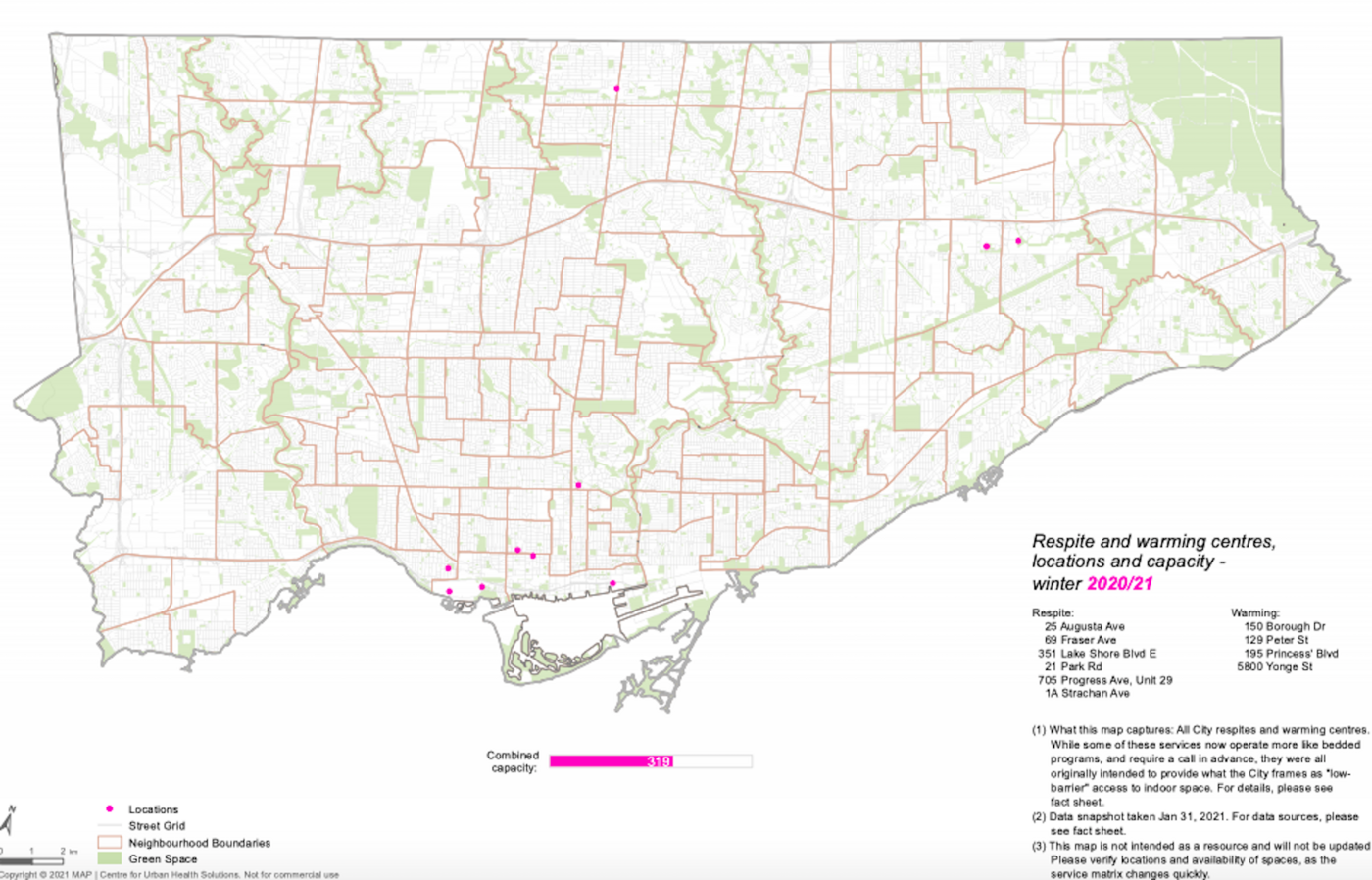 "There is a severe lack of access to public, indoor space in the winter of 2020/21, even during cold weather alerts," reads the study. "Current respite and warming centres do not have enough capacity or a sufficient number of locations to address this lack of access."
"There is a severe lack of access to public, indoor space in the winter of 2020/21, even during cold weather alerts," reads the study. "Current respite and warming centres do not have enough capacity or a sufficient number of locations to address this lack of access."
And while the city actually has 80 additional spots open in warming centres this year, these centres were at 98 per cent capacity with just three spots available city-wide on the night of Jan. 31.
When it comes to libraries and community centres, many spaces were also lost this year.
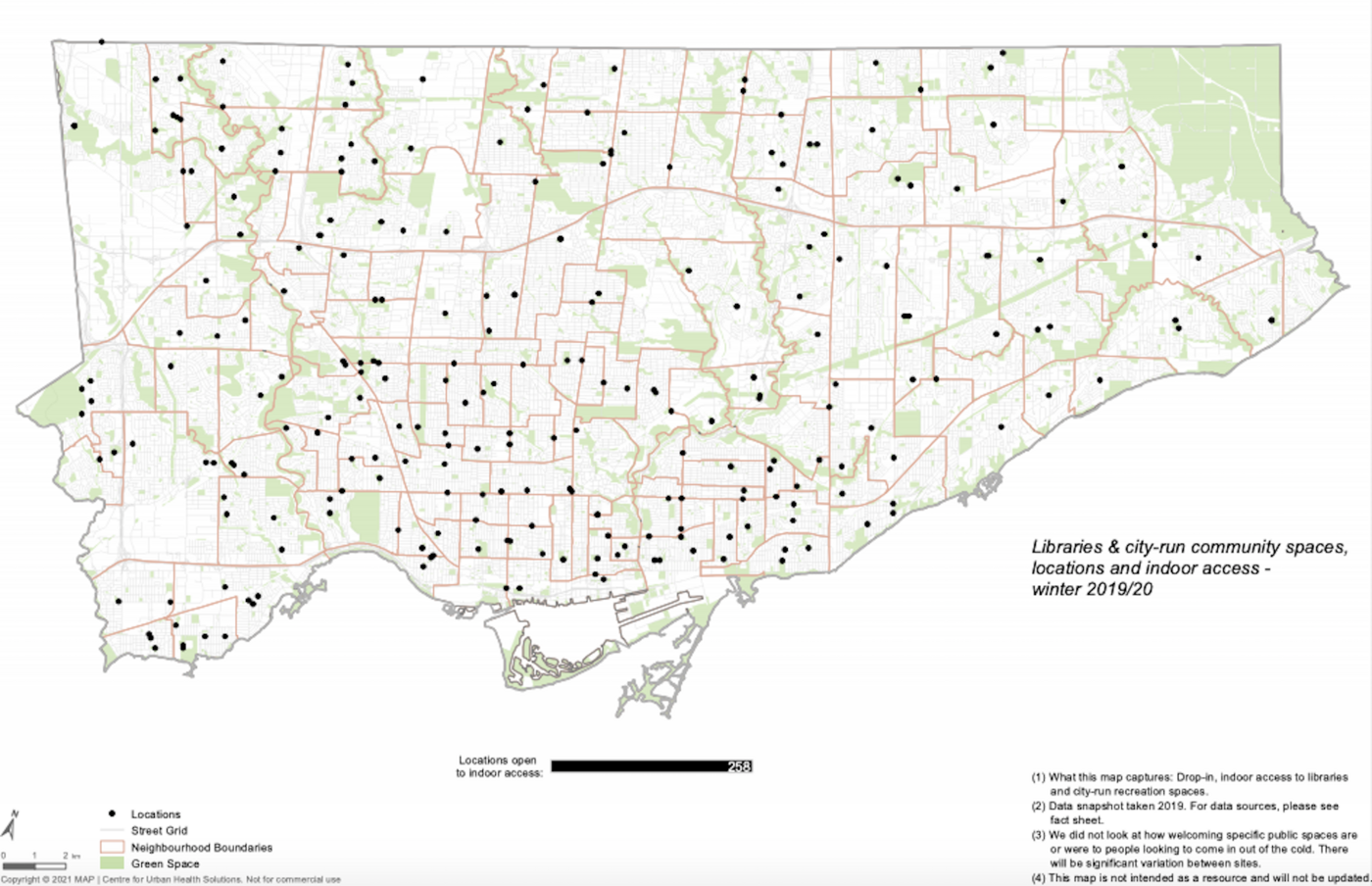 "In January 2021, libraries offered no indoor access, while the community centres that remained open largely only offered bathroom access, with a few exceptions," reads the report.
"In January 2021, libraries offered no indoor access, while the community centres that remained open largely only offered bathroom access, with a few exceptions," reads the report.
"As the province moves in and out of different types of pandemic restrictions, it is very difficult to track what is available, where and when."
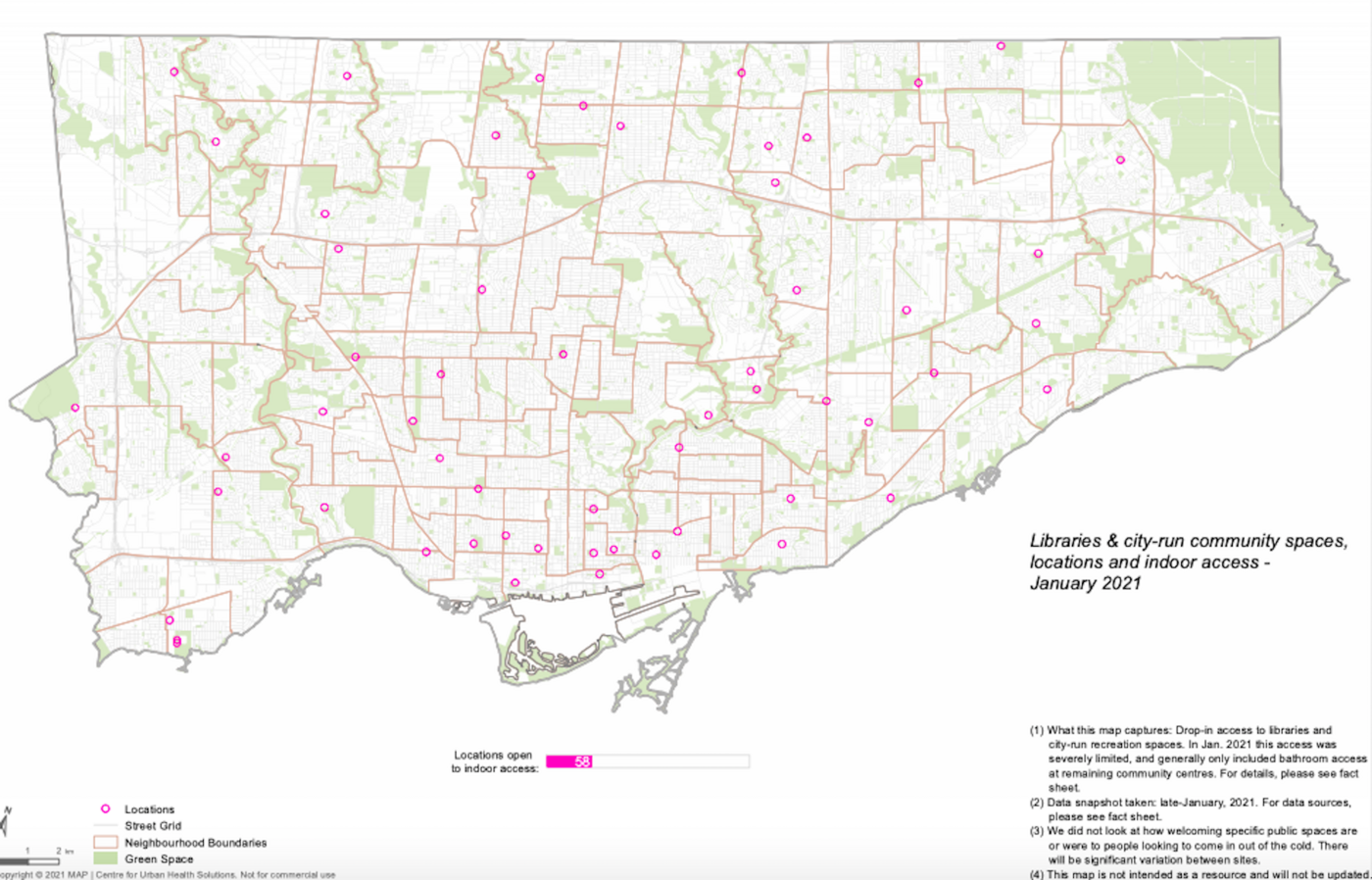 The 16 Out of the Cold programs (OOTC) running in 2019/20 meanwhile offered dinner and drop-in programming to people who stayed to sleep, and they also offered dinner and drop-in programming to 130 additional people each week who did not stay overnight.
The 16 Out of the Cold programs (OOTC) running in 2019/20 meanwhile offered dinner and drop-in programming to people who stayed to sleep, and they also offered dinner and drop-in programming to 130 additional people each week who did not stay overnight.
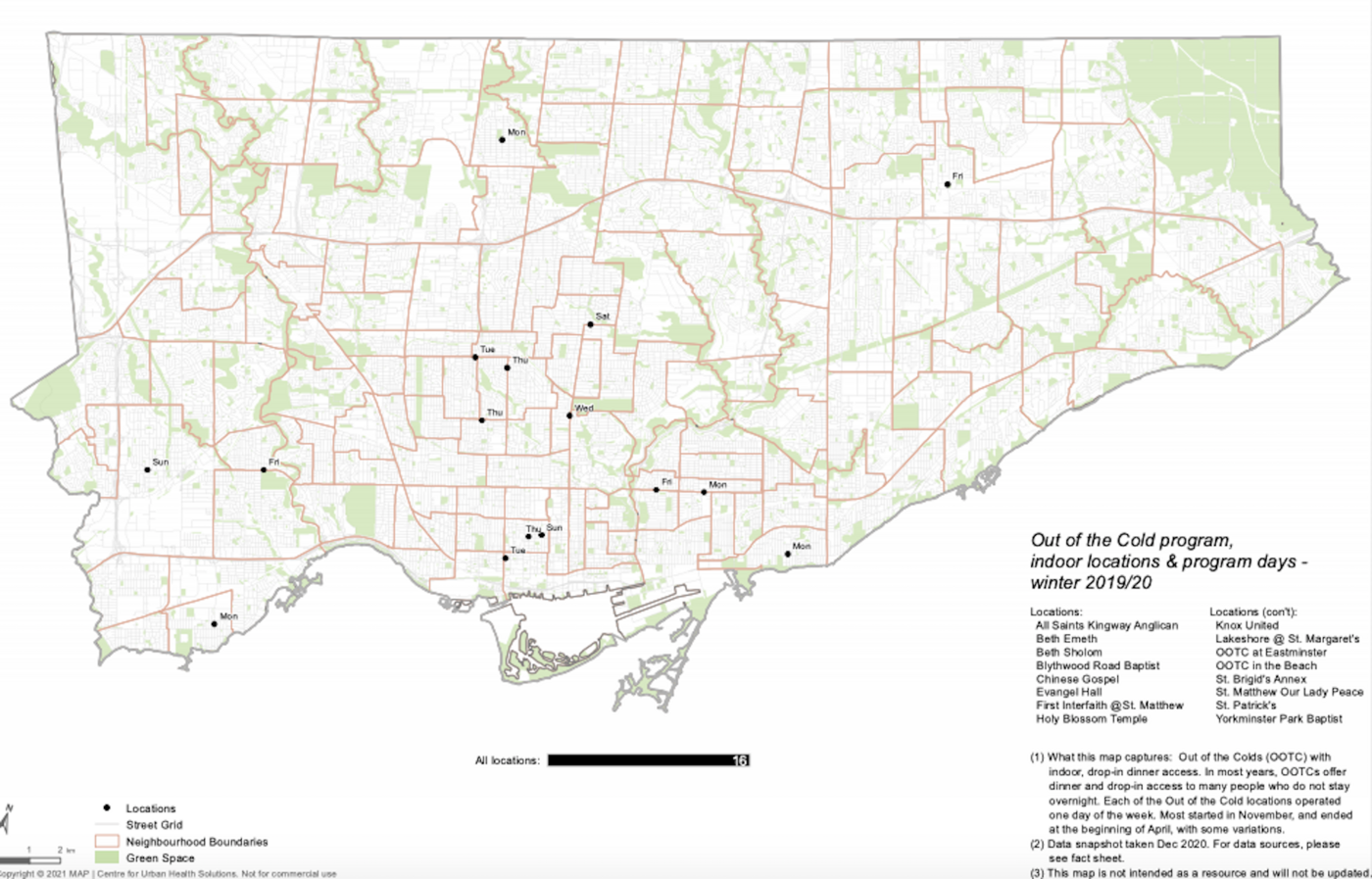 The beds associated with the OOTC program were fortunately replaced this winter, but the drop-in and dinner programming was not.
The beds associated with the OOTC program were fortunately replaced this winter, but the drop-in and dinner programming was not.
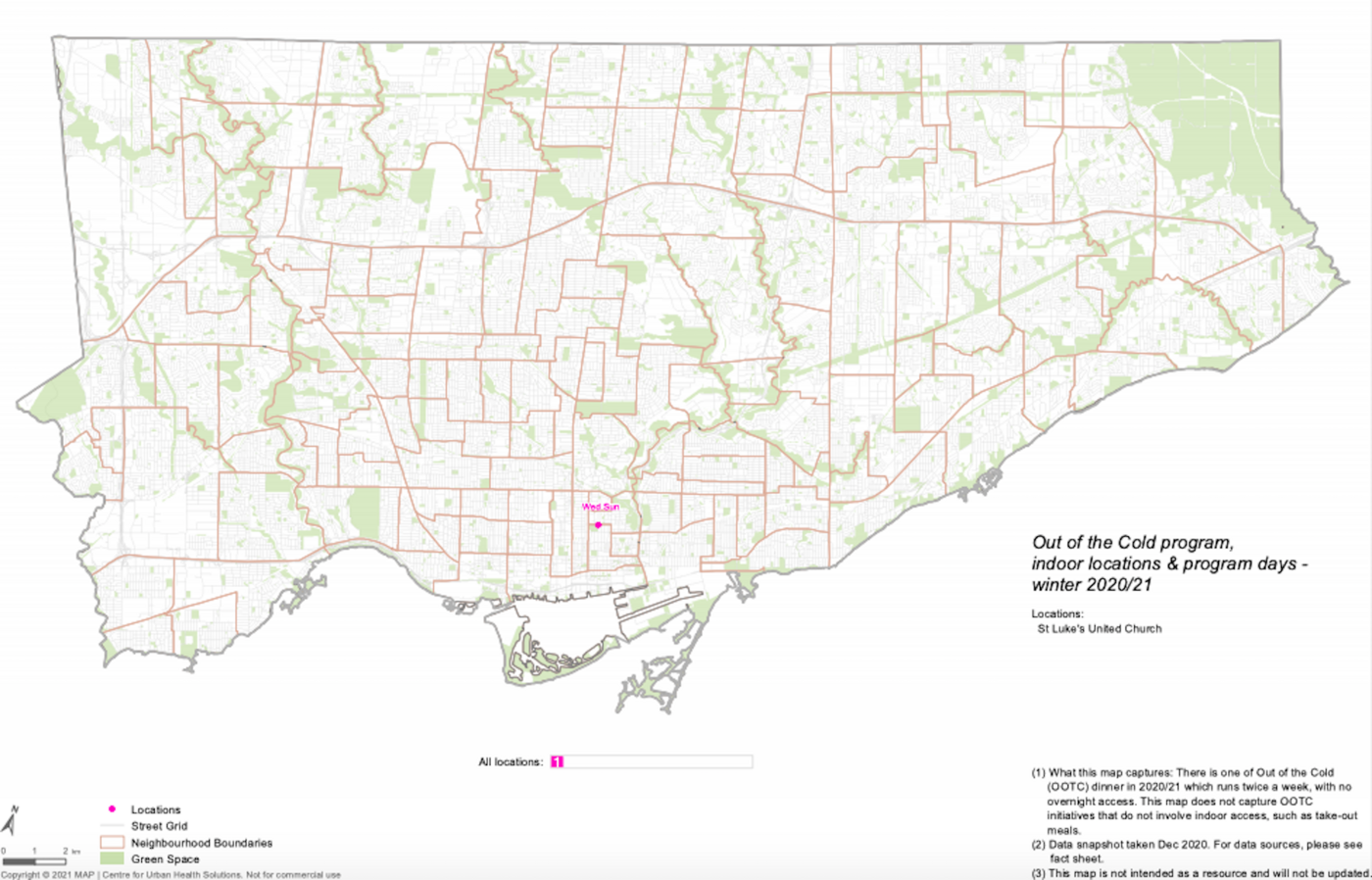 And the number of Toronto Drop-in Network members offering indoor access, which typically includes over 50 members, also decreased this year.
And the number of Toronto Drop-in Network members offering indoor access, which typically includes over 50 members, also decreased this year.
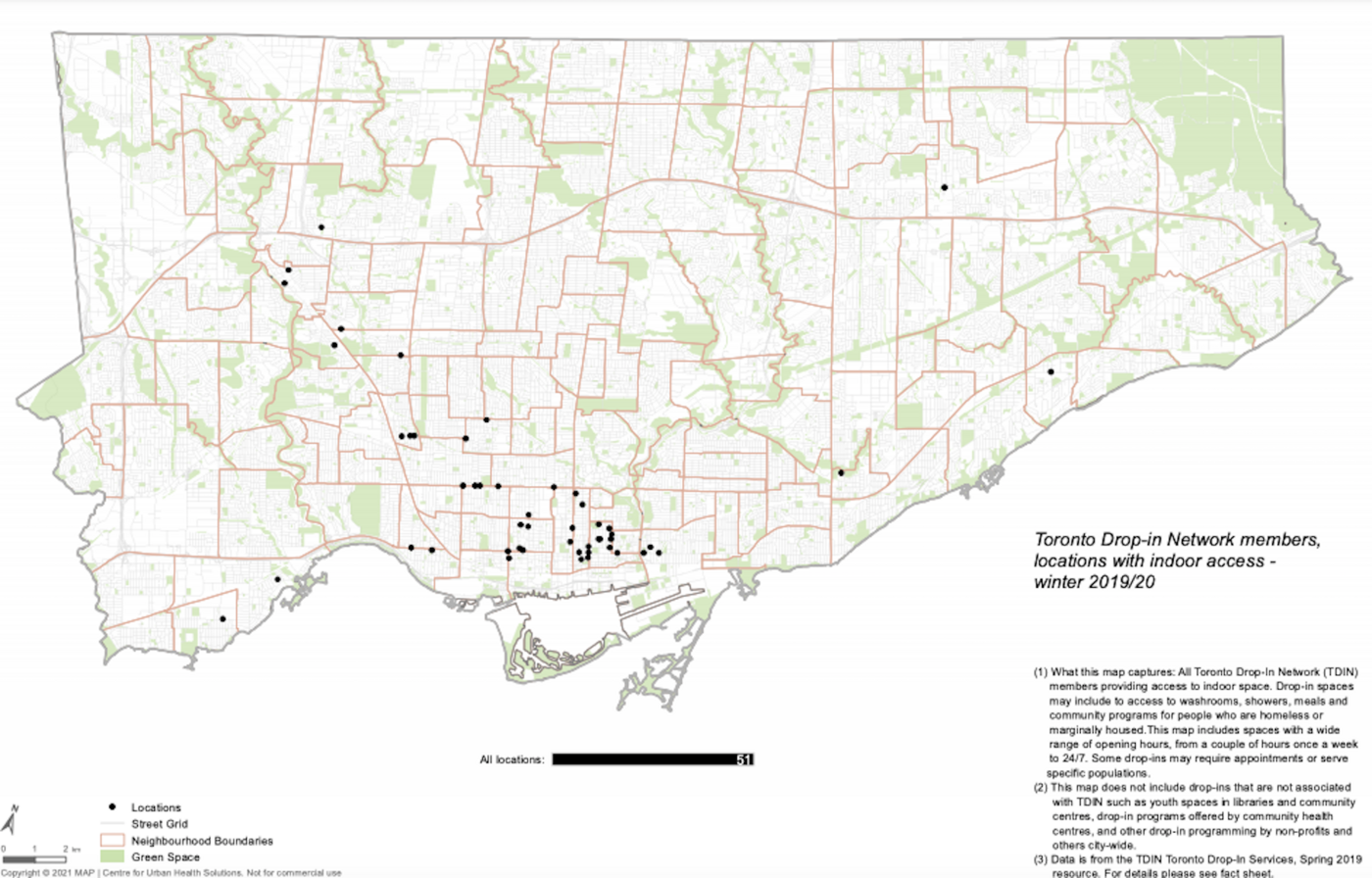 With last winter's 51 spots decreasing to just 19 this year, approximately 60 per cent of drop-in network spaces were lost.
With last winter's 51 spots decreasing to just 19 this year, approximately 60 per cent of drop-in network spaces were lost.
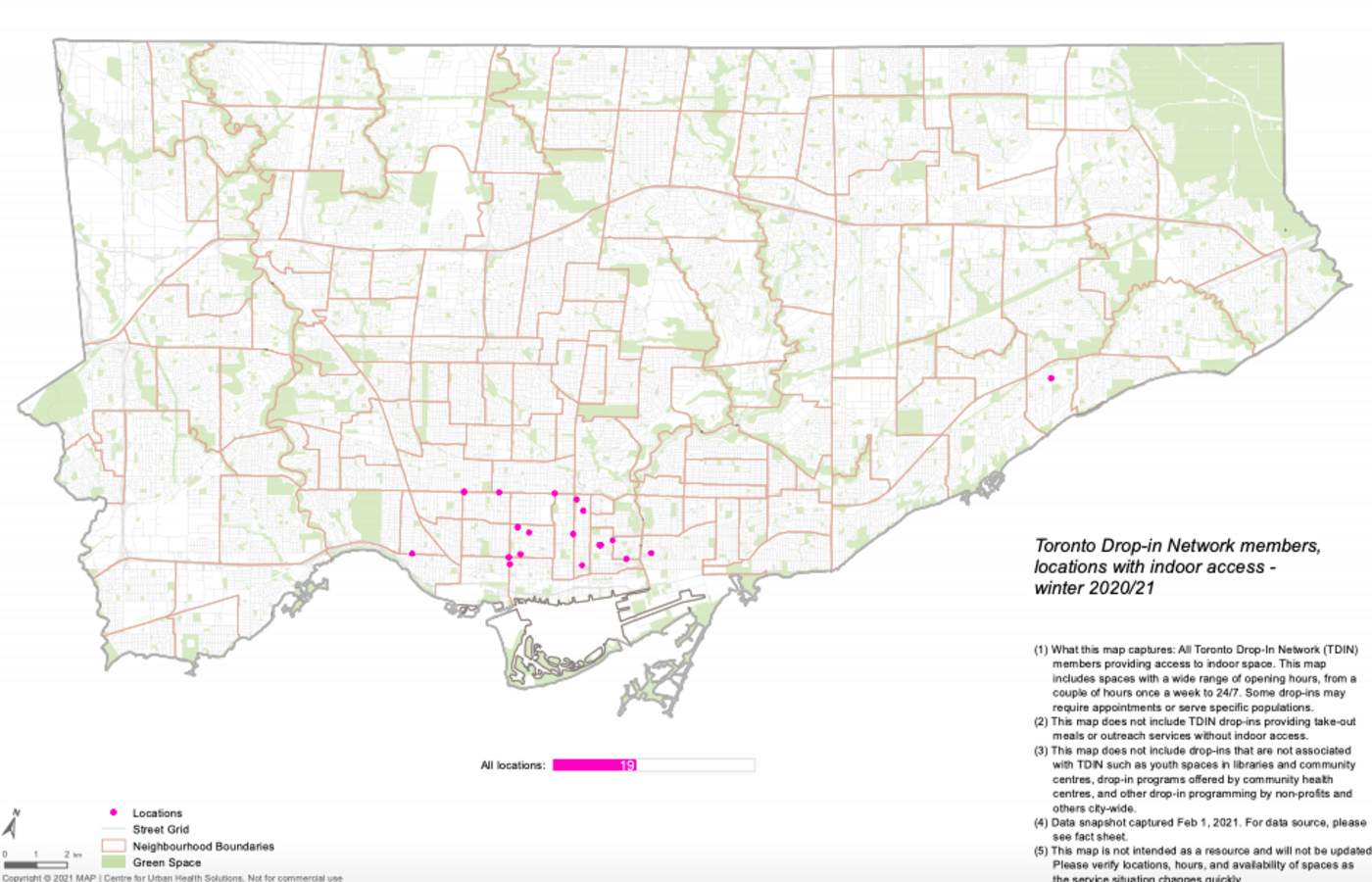
But beyond just discouragingly listing the spaces lost, the study also offers suggestions for solutions.
"There are many opportunities to open up additional space. For example, there are a range of buildings—including City-run buildings—that are currently closed to use," reads the report.
"However, ventilation and filtration practices are critical to reducing airborne transmission of COVID-19 indoor spaces. The good news: there are many ways to improve ventilation and filtration practices in the short and long term."
The research centre is recommending a list of actions for the city to take as a result of the findings, including:
- placing an immediate moratorium on encampment evictions and stopping the seizure of survival equipment such as tiny homes and tents
- outfitting encampments with necessities such as winter survival gear and access to sanitation
- immediately adding enough hotel rooms so that everyone who wants one has access to one
It also recommends embedding overdose prevention and harm reduction supports onsite, ensuring that a large number of hotel shelters are in the downtown core, and using all resources necessary to ensure that people have access to quality, permanent housing.
The research centre is additionally calling on the city to communicate clearly that Toronto is in crisis and to improve the amount and accessibility of public indoor spaces available to those experiencing homelessness throughout the winter.
Latest Videos
Latest Videos
Join the conversation Load comments







